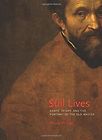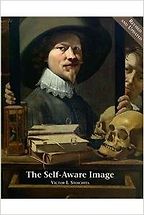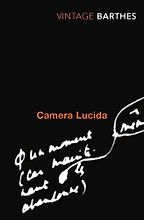You’ve likened Giorgio Vasari’s Lives of the Artists to a kind of Renaissance version of Facebook. In your work you analyse a key turning point in art history, when artists effectively went from being craftsmen – and most were men at the time – to becoming more like celebrities, as we would understand it, where the image of the artist became almost like public property. The artists themselves, their very bodies in some cases, seem to become public property. When we talk about our theme, the lives of the artists, what are we talking about?
What’s interesting about this historical period is that with Giorgio Vasari you have, for the first time, a large collection of biographies about artists. And for Vasari, he’s really writing history. He’s someone operating in a circle of humanists such as Paolo Giovio who wrote biographies of famous men including humanists, military leaders, and poets. One of the things that Vasari does is to take the profession of artist – which for him includes painters, sculptors, architects, but also printmakers, medallists, and various other practices as well – and to write a holistic history of art through the achievements of these men. Yes, they were mostly men, although there is one biography dedicated to a Bolognese sculptress (Properzia de Rossi), and female artists (such as Sofonisba Anguissola) do sometimes appear in the lives of other male artists. So, even then, Vasari did have an eye on inclusion.
“One of the immediate effects of Vasari’s Lives of the Artists is that artists start realising that their own lives become something that they can curate”
The point, however, is that once your profession becomes something represented on that scale, then other people who share that profession find standards against which to judge themselves – their own sense of success or failure and their status within the profession. If you are a shoemaker and you suddenly learn about many other famous shoemakers, then you have to think am I doing as well as that shoemaker or not? One of the immediate effects of Vasari’s Lives of the Artists is that artists start realising that their own lives become something that they can curate, and Vasari reminds artists to take care of their own image. In the “Life of Correggio”, for example, he is very critical of Correggio for not painting a self portrait: because he never bothered to, that memory is lost.
Vasari’s second stroke of brilliance was to capitalize on new technologies. The rise of the printing press not only enabled the circulation of printed biographies, but also of printed portraits. Vasari published the Lives of the Artists twice – first in 1550 just as text, and then again in 1568 with one hundred and forty-four portraits of as many artists as he could find. In the end, as it turned out, some of these were invented portraits – faces borrowed from paintings by those artists, or just faces found and used for that purpose, but these avatars created a visual pantheon of Renaissance art stars who were now both famous in name and ‘facially famous’.
You talk about artists curating their own lives and, obviously, artists were able to manage their own self-image in the work that they created. But only up to a point. One artist, however, that did a very good job of curating his own life was Albrecht Dürer. That was in part because of his very astute use of the printing press as a tool for self-promotion. Here’s an artist who really assimilated his life into his art, where his art is the image of its maker, quite literally. Which brings us to the first book on your list.
Joseph Koerner’s book, The Moment of Self-Portraiture in German Renaissance Art (1997), was a really important book for me as an art historian because it showed me how to think about portraiture not just in terms of who was portrayed, but also how the artistic process works and what a portrait enables the artist to do. There’s a drawing of six pillows that Dürer makes on the verso (or flipside) of one of his early self-portraits that is now in the Met. Koerner asks us to think: did the artist approach his own face in the same, highly objective way as the pillows? There’s something wonderful about that moment when the artist uses his own body as an object, in a world of objects, as a site to study and a form to master. What I took to heart from Koerner’s book is the tenuous line between interiority and exteriority: of how the artist pulls the idea out of his mind’s eye and transcribes this through his hand onto the sheet of paper. That becomes a somewhat existential phenomenon when that object happens to be yourself. Then where do insides and outsides begin and end?
Get the weekly Five Books newsletter
Dürer was a very self-conscious artist. He consistently signed his prints, watercolours, and paintings with his ‘AD’ monogram. He portrayed himself in numerous self-portraits, and they’re always very chatty self-portraits. There’s often an inscription that identifies him as Albrecht Dürer, lest subsequent generations lose memory of his facial identity. Like a tag or status update on social media, Dürer’s inscription will tell us that this is Albrecht Dürer, that he is a German artist, that he painted himself in 1484, 1493, 1497, 1500, 1506, 1508, 1511, etc.
“Dürer, certainly, was one of the earliest artists who really understood the potential power that artists have, as image makers, to create that lasting image for themselves”
In the famous self-portrait, which is on the cover of Koerner’s book, you have the monogram on the left, then you have Dürer’s face, and then you have an inscription on the right that announces his name. There’s this remarkable triple inscription of Dürer, a ‘trinity’ if you will, and self-portraiture becomes a highly curated, self-conscious affair. Sometimes Dürer shows up in the background of his own paintings, like the way Hitchcock would appear in his own films, but almost always he’ll be carrying a sign or a tablet that identifies him for the future spectator. That sense of speaking to posterity is very important in the Renaissance. The Italian poet Petrarch wrote a “Letter to Posterity,” addressed to the future with this understanding of his fame as something that would live on beyond himself. Dürer, certainly, was one of the earliest artists who really understood the potential power that artists have, as image makers, to create that lasting image for themselves.
The image on the cover of Koerner’s book is possibly Dürer’s most famous work, and many readers would immediately recognise it as a familiar face, even though some may actually take it to be an image of Christ and not of a Northern German renaissance painter.
People often misconstrue his self-identification with Christ as a form of artistic arrogance. On the one hand, there’s all of the earthly trappings such as the fur collar that he’s wearing – all of the elegant worldly trappings that he can’t help but want to show off. On the other hand, there’s also this quiet, confessional mood. It invokes the well-known classical adage nosce te ipsum (or know thyself). It can therefore be considered as a visual confession about self-knowledge and truth before God. For Dürer, who was profoundly Christian and a man of the Reformation to come, the imitation of Christ was a gesture of piety. It’s a very intimate portrait, emphasized by the darkness of the background and the frontality of his pose. It reads like a man looking into the mirror contemplating the image that looks back at him and reflecting upon who he appears to be as opposed to who he wants to be, the ideal virtuous self that he hopes to find in the traits of his face. Dürer’s direct gaze addresses three unknowns: God, his own reflection in the mirror, and the future viewer of the painting.
Stoichita, another one of the writers that you’ve selected, writes about The Self-Aware Image (1993), and this is certainly what many of Dürer’s portraits represent.
Maybe we could think about book covers for a moment here because the image on the first edition of Stoichita’s The Self-Aware Image is Rembrandt’s “The Artist in the Studio”. We are all familiar with Rembrandt’s incredibly searching self-portraits painted at various points in his life. But what I find so interesting about the painting that appears on Stoichita’s book is that art historians sometimes identify it as a self-portrait and sometimes simply refer to it as “The Artist in the Studio”. This is very different from an ‘autonomous’ self-portrait, which focuses on the identity of the artist. For instance, Stoichita refers to Dürer’s many guest appearances in his own paintings, such as the Martyrdom of the Ten Thousand, as a ‘self-portrait as visitor’. We know this is Dürer because he identifies himself as such and because it looks like the same face we find in his self-portraits. But with “The Artist in the Studio”, Stoichita pushes us to think about painting as a site of self-awareness, where painting becomes almost a form of and forum for visual philosophy. And so, in Rembrandt’s image, even if the man in that painting is not an actual portrait of Rembrandt, it is nevertheless a portrait of the process that Rembrandt like any other artist went through in order to paint something. It becomes a portrait of the artistic self at work, rather than a self-portrait of Rembrandt’s face.
What’s also going on in both the example of Dürer and the other artists that Stoichita speaks about is a moment of changing technologies. With Dürer, it’s the introduction of prints, which then leads on to the dissemination of thoughts, ideas, as well as images in the first decades of the sixteenth century and, more crucially, during the Protestant Reformation. Whereas, according to The Self-Aware Image, we witness the arrival of the portable canvas in the second half of the sixteenth century, an object that can be taken out of its original context and travel into new ones, and that can speak on behalf of the artist in absentia. Stoichita’s last section on artists is inflected by the ideas and writings of Descartes and Montaigne, for instance, which represents a different philosophical moment that is perhaps the eventuality or the sequel to some of the ideas put forth in the earlier moments by thinkers such as Erasmus, Calvin, Luther, and, of course, an artist like Dürer.
“Art was a form of visual philosophy written with brushes and chisels rather than with pen and ink”
What’s inspiring about Koerner and Stoichita is that both authors are thinking about how changes and shifts in the history of ideas coincide at a certain moment with changes in technology as well, and how that precipitates a modern form of portraiture that asks new questions about the meaning of life: what it is to be a self, what it is to be here, what it is to be a time-bound mortal subject, and what is an image—that is, what can it do? Historians of ideas have long since mapped out the trajectory from Augustine’s Confessions to Rousseau’s Confessions. Even in Descartes’ time, the notion of selfhood was very fraught; the idea of the ‘self’ was closer to the modern notion of selfishness than of more positive concepts such as self-sufficiency. “I think, therefore I am” is a phrase heavy with doubt and anxiety. Artists, too, were participating in these debates; art was a form of visual philosophy written with brushes and chisels rather than with pen and ink.
Perhaps the sequel of this Renaissance moment of self-awareness and self-fashioning is our own image-fixated culture. Shifts in the history of ideas, as you say, often coincide with or are precipitated by changes in technology. Photography presents us with a range of very similar problematics about the self and its representation. Susan Sontag goes so far as to say that in our own day and age we almost prefer photographs to the real thing, that our modern culture is all about producing and consuming images.
Sontag’s lesson is that being photographed gives us a sense of both being real and also of existing. The rise of the selfie is eloquent testimony to how people continue to see themselves and how personal histories are now constructed first and foremost through the authority of the image. There’s a kind of strange moment where a memory is difficult to confirm or corroborate if there isn’t an image to attest to the fact that you were here or there or with this or that person on a given time and day—this speaks volumes about the popularity of social media sites such as Instagram, which are driven by images. Sontag had such a prescient way of looking at the powers of photography when On Photography came out in 1977. That’s now forty years ago!
The preference for the photo to the real thing is something that we find now perhaps more than ever. People don’t tell you stories as often as they used to: instead they’ll take out their phone and show you a photograph of the experience. Sometimes that’s a peculiar phenomenon because the image then is able to determine the story that the person tells. There are all sorts of incidental details—such as the length of a hem, the color of the sky, the pattern on a tea set, or the make of a car—that we don’t necessarily remember about lived experiences because they pass us by. But in a photograph, we can see and, therefore, remember oh so and so was there, was wearing that necklace, came with that man, ate too much cake, etc.
“People don’t tell you stories as often as they used to, instead they’ll take out their phone and show you a photograph of the experience”
Sontag and Barthes’ generation thought about photography as a kind of new media. I am simplifying a bit here since photography itself was more than 100 years old by then. But thinking critically about it as art, as a medium with its own specificities wasn’t fully articulated, at least not in the way it has been so thoroughly theorized today. Writing philosophically about photography and the power of that specific medium was still exploratory when they were writing in the 1970s and 1980s. This experimental critical spirit reminds me of things that artists in earlier periods were trying to do in their own work as well with the media that they had at their disposal. They obviously could not have foreseen the eventuality of photography, but for someone like the sixteenth-century painter Sofonisba Anguissola, every self-portrait was in a sense a kind of desire to capture and preserve that instance, that lived moment of her life, as an image. Obviously not through the same technological means as a photograph but the underlying philosophical or existential desire was there. Moreover, even though Sontag’s and Barthes’ writings focus on photography, they have the potential to help us think differently about the concerns—philosophical, existential, and otherwise—that artists from a different era, working in a different medium might have confronted in their own practices of image-making. Sontag is also just such a beautiful writer. I read On Photography as a freshman in college, and it has remained a great inspiration in my own work.
If the freeze-frame or the selfie are visual evidence that we are here now, the photograph also denotes, of course, that we will not be here for long, in the grand scheme of things. In Camera Lucida (1980), Barthes seems to regard every photograph as a memento mori, and a memorial. I suppose it’s poetic that this book should have been his valedictory publication. It really reads more like a memoir than an academic treatise.
Despite the deep admiration for Sontag I just expressed, now that you mention Barthes, I have to confess that Camera Lucida is perhaps my favourite book ever about art. Barthes’ identification of the ça-a-été (or the ‘that-has-been’) as the essence of photography and his theorization of the punctum or accidental detail are two central ideas to which I return time and again.
There’s something so surprising about Camera Lucida, probably because it’s so subjective and fragmentary; it feels as though we’ve been invited into the author’s most intimate train of thought. It wasn’t an especially well-received book when it came out precisely because it was regarded as too sentimental. There was too much pathos. It speaks in a confessional mode that avant-garde modernism rejected wholeheartedly. Camera Lucida is not the semiotic Barthes of “The Photographic Message” but the more vulnerable Barthes of A Lover’s Discourse. There’s this sense of wounded distraction and absorption that comes back to haunt the discussion.
But in the end, he nevertheless offered us that lasting reflection upon the difference between the mobile image – the self captured in a photograph or the presence of a person captured in a photograph – versus the profound self that one is left with when one is left alone in solitary intimacy. In this regard, we could even say it shares certain similarities with Dürer’s Self-Portrait. But it’s also so much more than that. At the time of writing, Barthes was still doing the work of mourning of his mother’s death. His thoughts on photography, memory, and portraiture are framed by that melancholic sense of remembering his mother not only by looking at images – photographs – of her but also through a process of writing about those pictures. There is that evocative passage when he finds a photograph of his mother before he was born and he writes “I could read my non-existence in the clothes my mother had worn before I can remember”. The portrait operates like a memento mori, certainly, but it also functions as a portal to another historical moment — one that occurred before us, but that also possesses the power to survive beyond us.
When I look at portraits, I always have that sinking feeling: this person existed and now I am looking at him or her. Barthes says this at the beginning of Camera Lucida when he comes across the photograph of the brother of Napoleon and suddenly he realizes that “I am looking at eyes that looked at the emperor”. Even with personal photographs of an unknown person, there is that sense that someone gazed upon this face, possibly with some affection, and took this photograph to preserve a memory of that individual and that, somehow, that portrait has survived and found its way to us.
“One day, probably sooner than we anticipate, Facetime, Skype, and Snapchat will seem extremely old fashioned”
I think painting, sculpture, and even architecture are able to create that for spectators as well. Photography is something that we’re so accustomed to now as a part of our lives, but if you think about oil painting, it, too, was once a new medium, once a new technology in the fifteenth century. All those translucent glazes reflected light and colour in a manner that made the image seem so much more alive and real than tempera or fresco had before. Portraits rendered in oil painting were, for Renaissance viewers, as close to an indexical stamp of the body of the sitter as they could possibly have imagined within the technological means available to them at the time. One of the important things to remember is that every historical moment has its new technology that will then become outdated. One day, probably sooner than we anticipate, Facetime, Skype, and Snapchat will seem extremely old fashioned, but for now they are what seems modern to us.
It’s so interesting to think as a historian about Sontag and Barthes writing at the end of the seventies, reflecting upon the power of the image to be philosophical and to shift the world and the way we think. Sontag enables the photograph to stall what she so beautifully coins as “time’s relentless melt”, whereas for Barthes the process of attrition begins from the moment that the shutter snaps. From that instance, everything becomes micro instances of loss. So, you have a different drive behind the two authors and yet they both have this way of thinking about the pathos of the image in ways that nevertheless allow for emotion and sentiment in a history of art.
Many Renaissance artists were regarded as conjurers for the way they were able to draw out a likeness, or even for bringing back the dead through the vividness of their portraiture, granting their subjects a kind of immortality. Another form of immortality is to become a rock and roll icon. At times, reading Just Kids feels like looking at a collection of Patti Smith’s polaroids – poetic glimpses of an ephemeral reality. It also reads like a 1970s New York version of The Lives of the Artists, in which she has this pantheon of saints – people she’s very devoted to – all of whom are artists. In her memoir, the city, the time and the place, it all scintillates with this sense that she’s part of this great trajectory: that she and her circle are connected to a lineage of great artists that came before.
Yes, the rock star as artist and the artist as rock star! What I found so moving about this book is that it links the crucial elements of friendship and art to survival. The work of art stands as a souvenir of friendship, but also becomes in and of itself like a ‘friend’ that survives the people whose friendship it was preserving. So, if you think about that iconic portrait of Patti Smith by Mapplethorpe – long after Patti Smith herself has left, and long after we all have left, that portrait will still be attesting to the shared friendship between those two ‘kids’ in that moment, on that day, when it was taken. And in generations and even centuries to come, every time someone gazes upon Mapplethorpe’s portrait of Smith, the portrait will conjure those people, reinstantiating both the moment of friendship and the moment of making that portrait.
“The work of art stands as a souvenir of a friendship”
Patti Smith’s book is wonderful in that it is also a portrait of a particular New York that is very much gone. In a way, all of the eccentric, ambitious, crazy, and one-of-a-kind characters that the reader encounters within Just Kids might be compared with the various personalities in Vasari’s Lives of the Artists. Vasari writes the first edition in the 1550s, at a moment when art seemed to have reached its pinnacle and was perceived to be on the decline. I often think about that generation of artists in the 1540s in Rome as being comparable with New York in the 1970s. In 1527, Rome is sacked and there is an entire generation of artists who have little work because patrons have decamped and little money is left for grand projects. By the 1540s, work starts trickling through again, but Rome is just not the artistic capital that it was under Julius II during the High Renaissance. There is this entire city full of artistic hopefuls who really have to rely upon each other for friendship, for guidance, and for work as well. This is something that comes through so nicely in the set of drawings by Federico Zuccaro of his older brother’s journey through Rome in the 1540s. These are now in the J. Paul Getty Museum and capture, like Patti Smith’s Just Kids, a portrait of a historical moment where there’s both extreme poverty and optimism, where art and friendship mitigate very real social and economic dangers.
“I often think about that generation of artists in the 1540s in Rome as being comparable with New York in the 1970s”
Smith also narrates the uneasy relationship between artistic fame and artistic virtue. I think at one point she says about Mapplethorpe “we were both praying to save Robert’s soul, he to sell it and me to save it”. Money and art sometimes mix very badly. You can draw that conclusion, too, from reading Vasari’s Lives of the Artists. There is much criticism, for instance, of Sebastiano del Piombo, a Venetian painter who comes to Rome and gets this very cushy papal position, and then decides he doesn’t want to paint anymore. He just wants to live a life of comfort. Vasari is very, very critical of that. So, again, you have these contrasting positions and attitudes that different artists take towards the dream of becoming a famous artist. There is something so touching about the way friendship and survival somehow deposit themselves in the work of art, whether it’s a photograph, a painting, or, in Patti Smith’s case, a very moving memoir.
There’s a wonderful quote from the book: “Robert was concerned with how to make the photograph, and I with how to be the photograph”.
Yes. A portrait is a pact between the artist and the sitter. It’s a confidence. For people who love to be photographed, that’s not an issue. I myself don’t like to be photographed because, well, it’s that sense of having to co-habit with this other self that represents me out there in the world. In this regard, portraiture is a very fraught activity. The primary betrayal that happens in portraiture, even now with the instantaneous editing processes of digital photography, occurs in that moment when you hold your breath before the image is taken and you think to yourself okay I hope I’ll look good in the photograph and perhaps I’ll even look better in the photo than I actually look in real life. Representation trumps reality! And I think that’s true certainly for painted portraits as well. There is always the desire to be slightly more idealised in the portrait than one was in real life because, of course, the portrait will stand in as a surrogate when you were no longer there. And you don’t want to be remembered as a slob in sweatpants with no makeup on. You want to be standing there with your best face forward looking radiant and forever young. Just like Dürer in his Self-Portrait. You want to be remembered as a super-hero version of yourself.
Or to be immortalised by someone like Robert Mapplethorpe.
Absolutely. Patti Smith’s portrait in Mapplethorpe’s photograph is one of the icons of casual cool. She could not have wished for anything better. And that comes back to the issue of friendship and trust as well because, and this is especially true in artist portraits, for one artist to be portrayed by another is an act of trust, of confidence. For example, Michelangelo hated portraiture, so for him to let himself be portrayed by Daniele da Volterra, who was his dear friend, was a real sign of friendship. To render yourself over as a subject is a small form of death somehow, especially for people who aren’t particularly fond of being turned into images. The lives of the artists, therefore, is also about a life lived as images, for better and worse.
Maybe all of us, in this day and age, should be a bit more circumspect about how freely we circulate images of ourselves.
I know. I once found photographs of other people on Google also named Maria Loh, but who weren’t me and I was quite pleased because I thought oh good, maybe people will think those other Maria Lohs are me and the real me (whoever that is) can remain under the radar … in my sweatpants.
Five Books aims to keep its book recommendations and interviews up to date. If you are the interviewee and would like to update your choice of books (or even just what you say about them) please email us at [email protected]
Five Books interviews are expensive to produce. If you've enjoyed this interview, please support us by donating a small amount.












